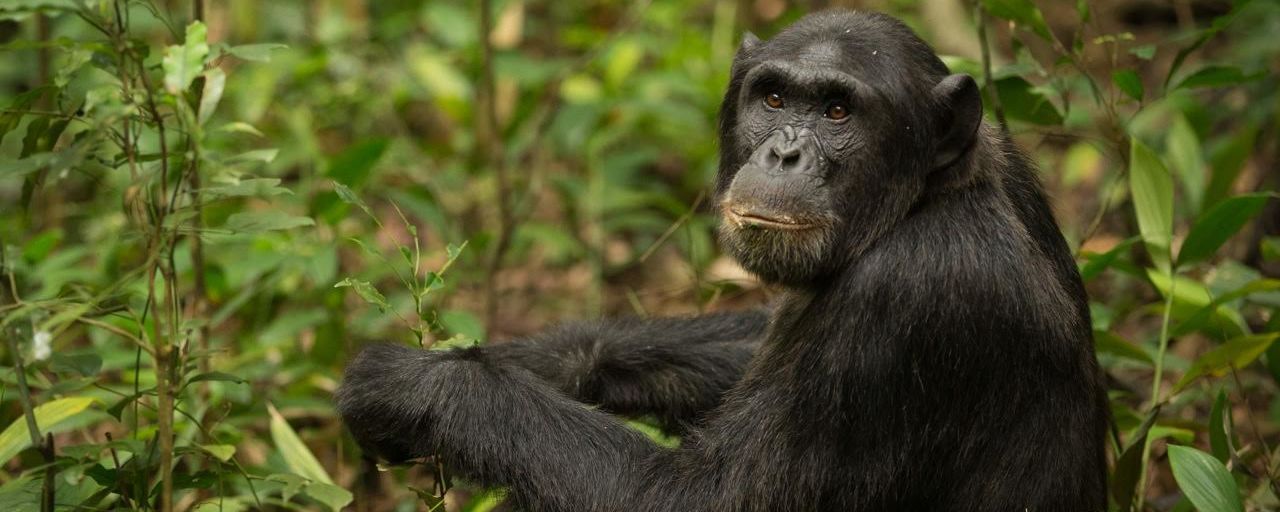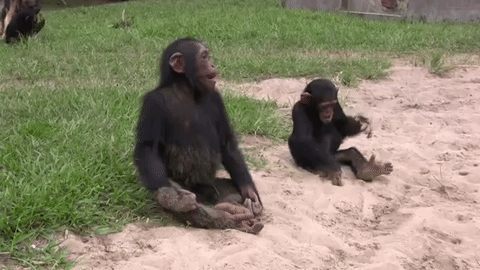Chimpanzee Behaviour

When Dr. Goodall started her study of chimpanzees in 1960, very little was known about their behaviour in the wild. Since then, chimpanzees have offered insights not only into chimpanzee culture, but into our own as well.


Chimpanzee culture is much like human culture: groups in different areas share different cultures. Chimpanzees develop different cultural practices depending on their environment, and transmit their culture as learned behaviour. Tool-use is a good example.
In Gombe, chimpanzees use long twigs to fish for termites.
Some groups of chimpanzees use branches against flat surfaces to crack nuts.

Chimpanzees have exhibited as many as 39 learned behaviours, including feeding, mating, grooming, and tool use. Behaviours are often learned at an early age by watching and copying others.
A young chimpanzee mimics his older friend.

Group structuring, communication, and hunting practices are often common from one chimpanzee group to another, but are rarely identical.
Chimpanzee behaviour is so complex because their mental capacity is so developed. Through research, many mental traits that were once considered unique to humans have been demonstrated by chimpanzees, such as reasoned thought, abstraction, generalization, symbolic representation, a concept of self and grief.
Chimps grieve over the loss of a close friend. They return to his body multiple times.